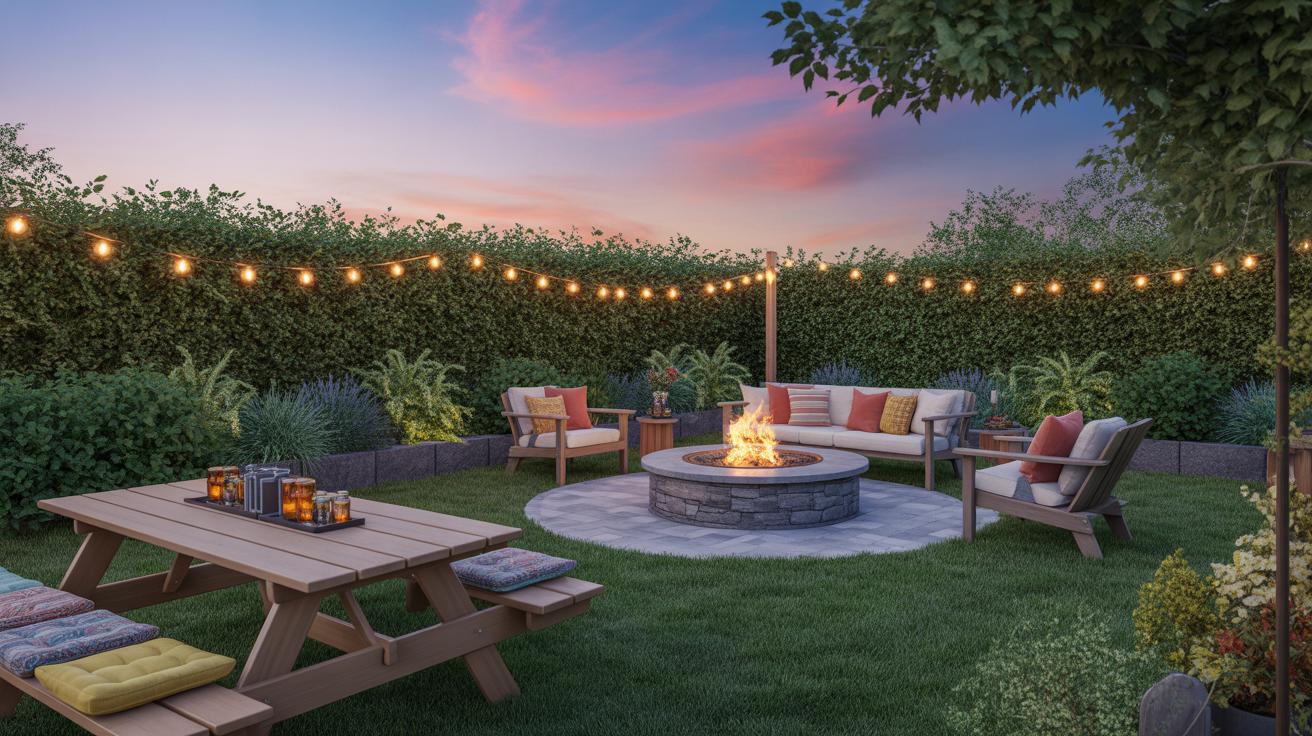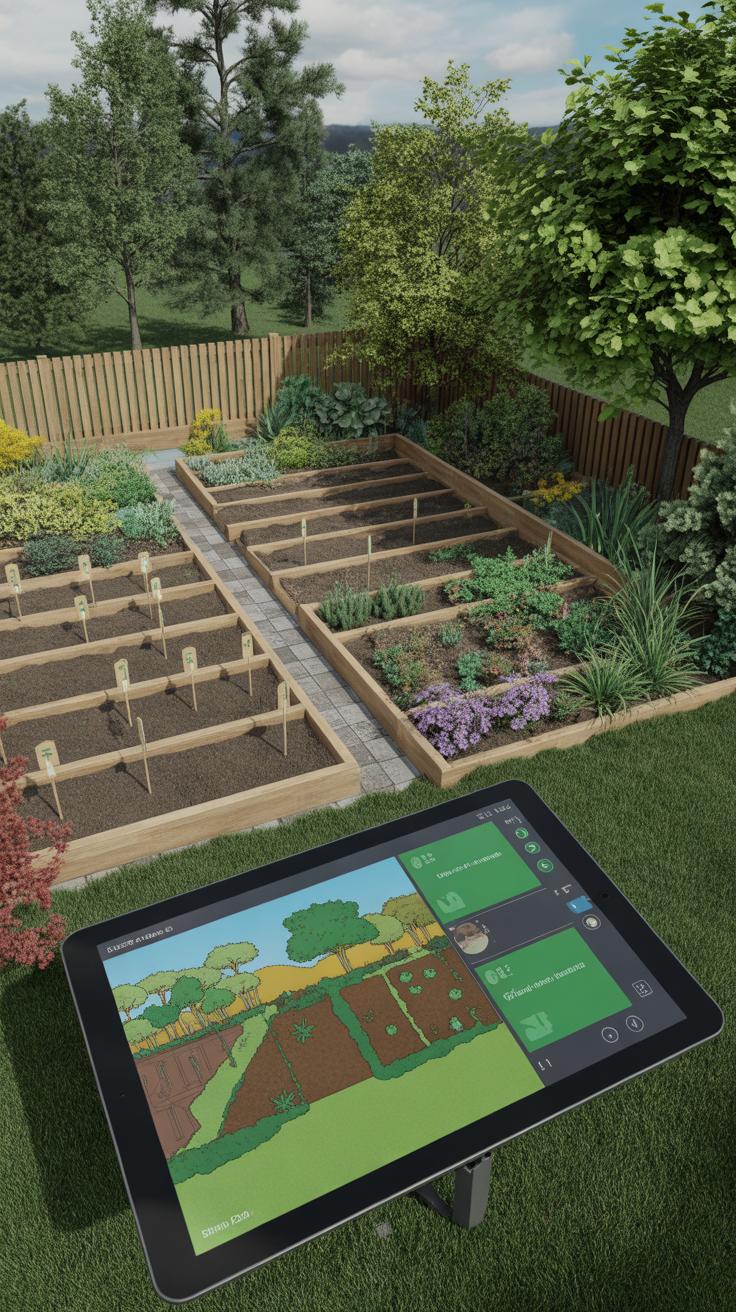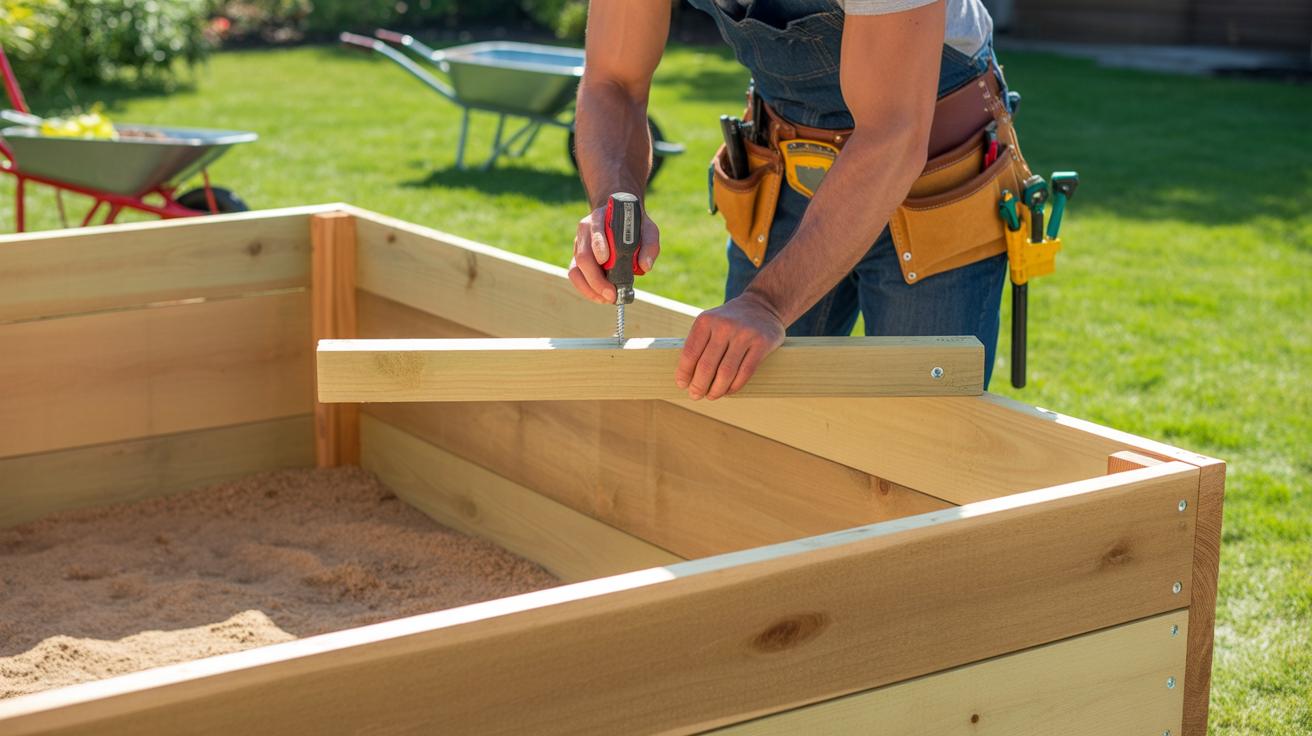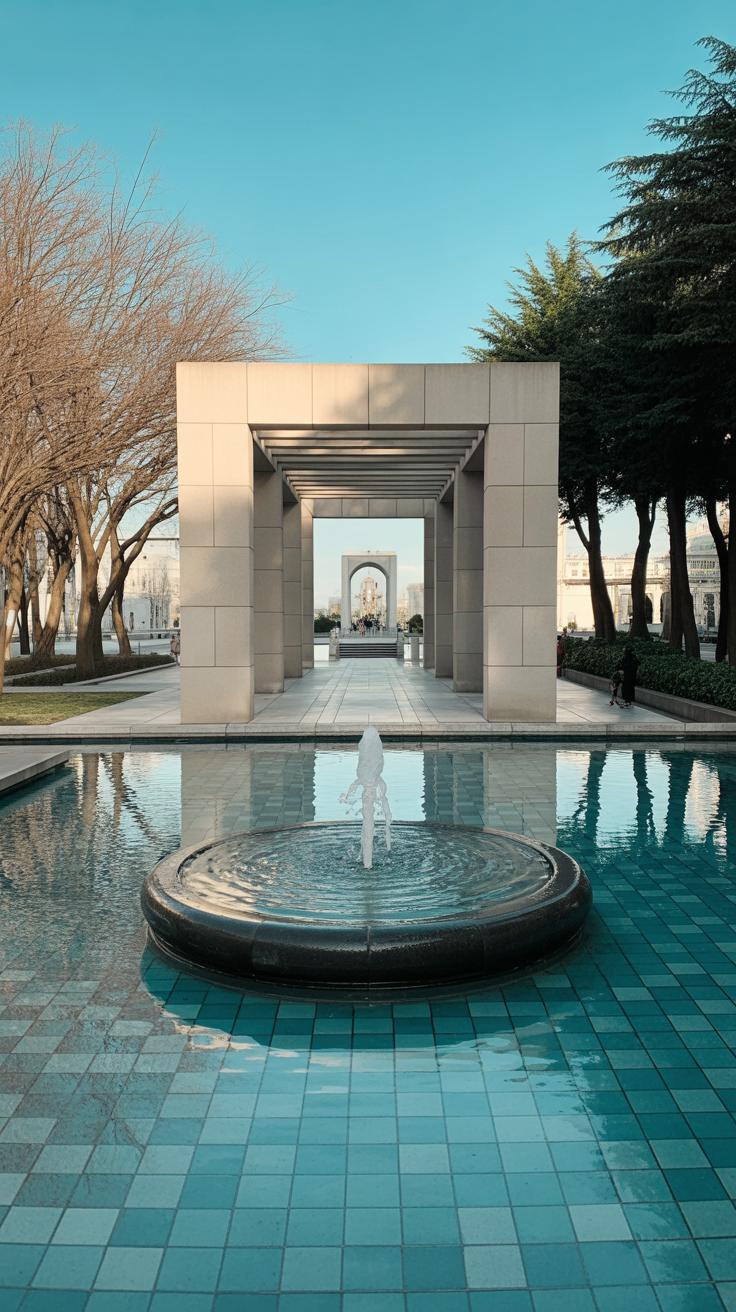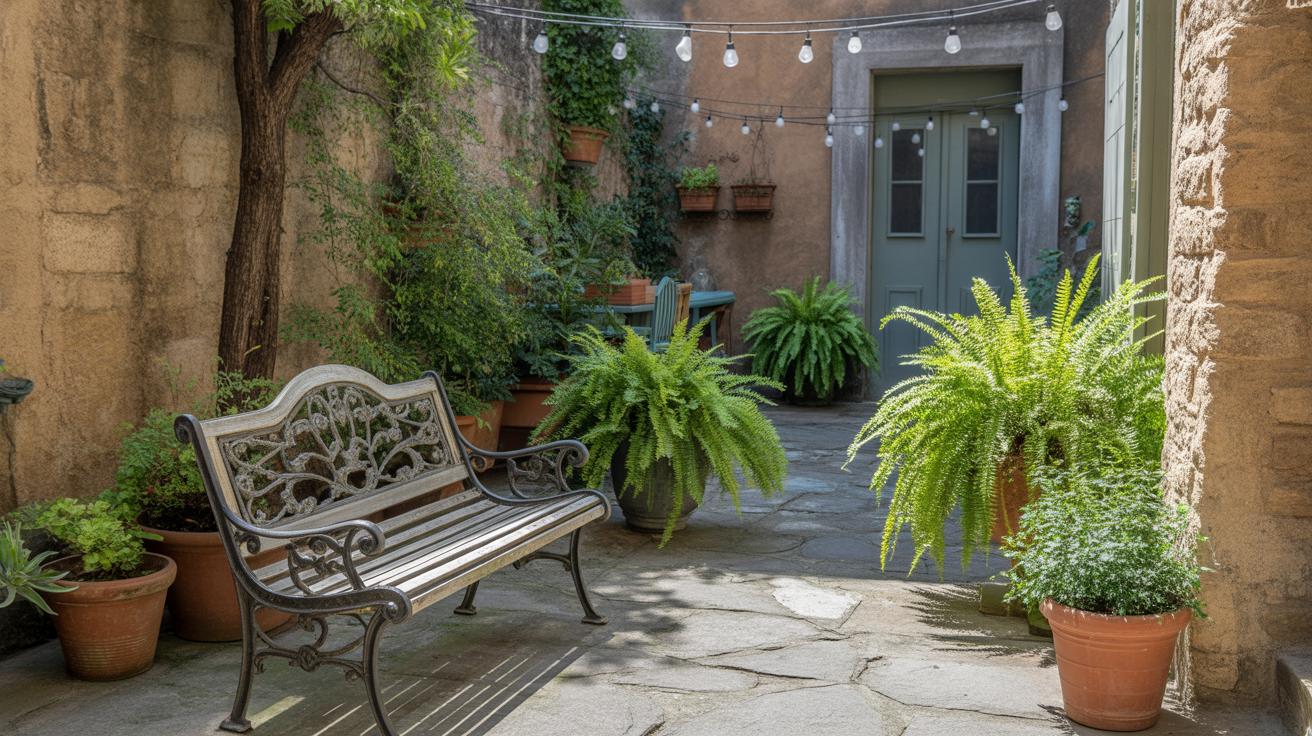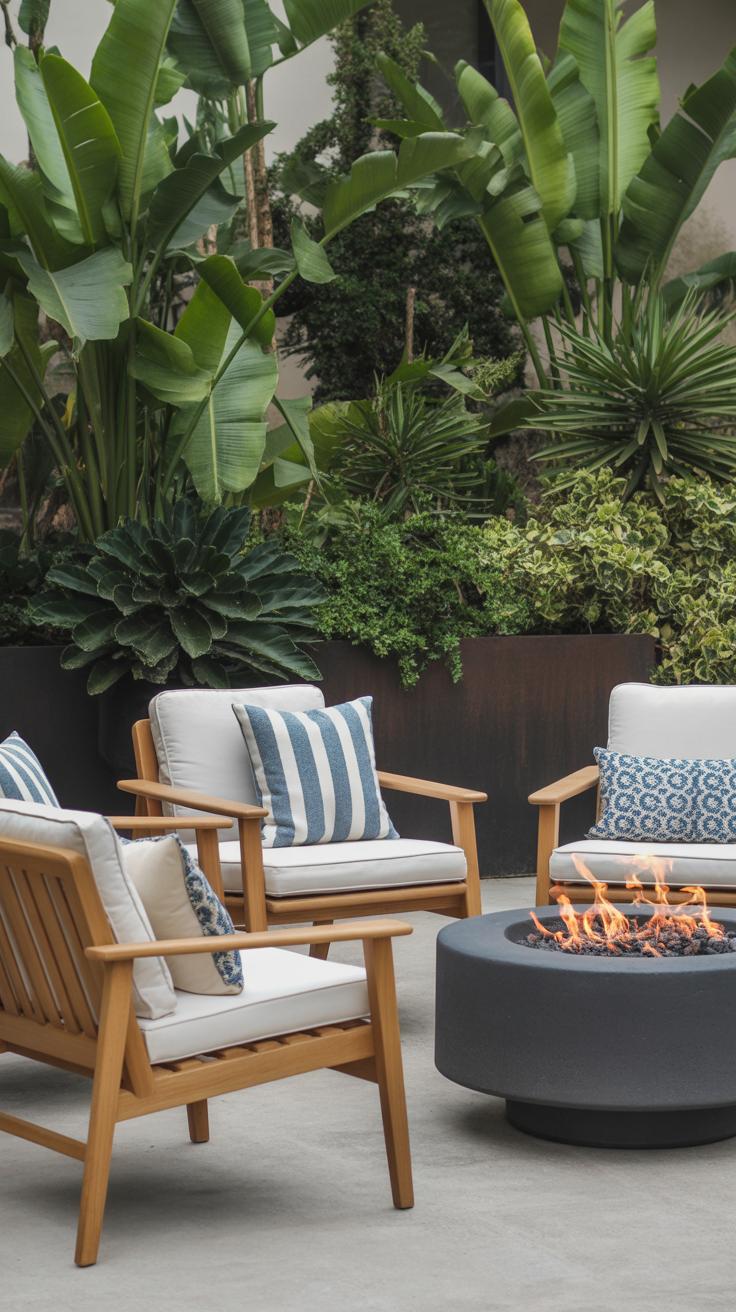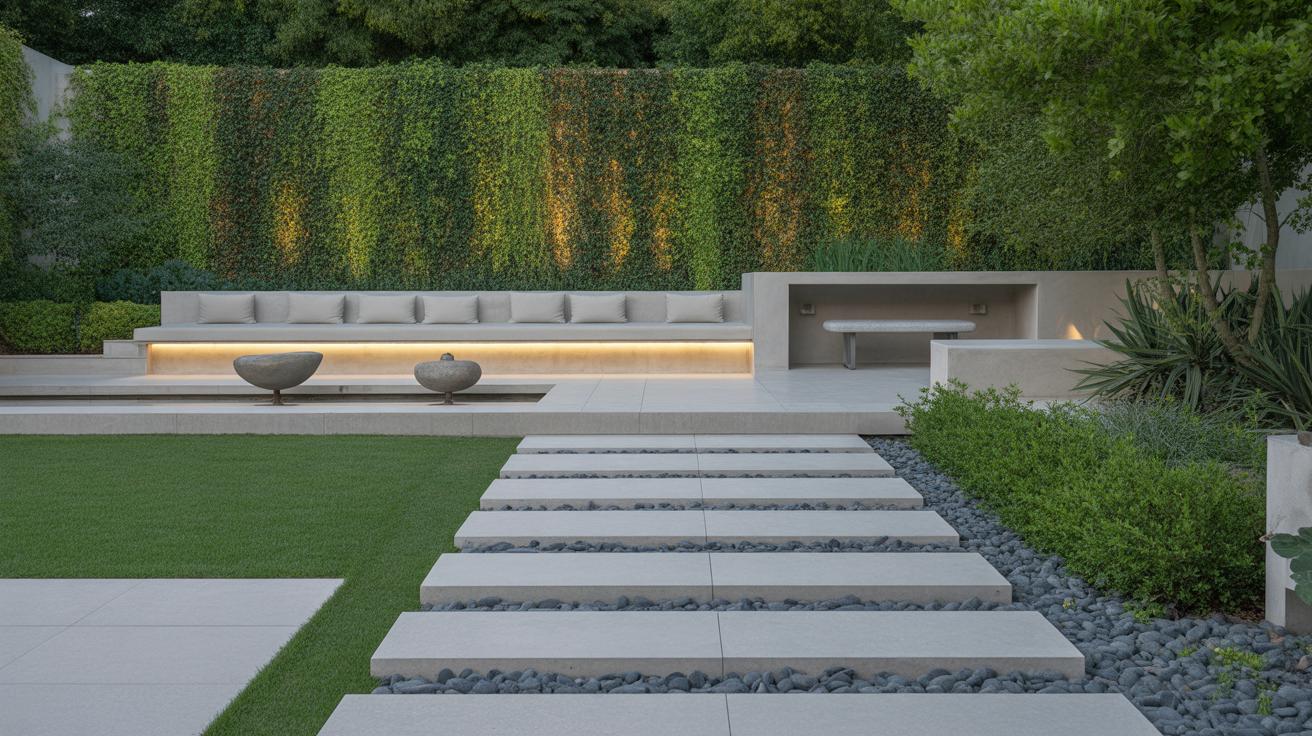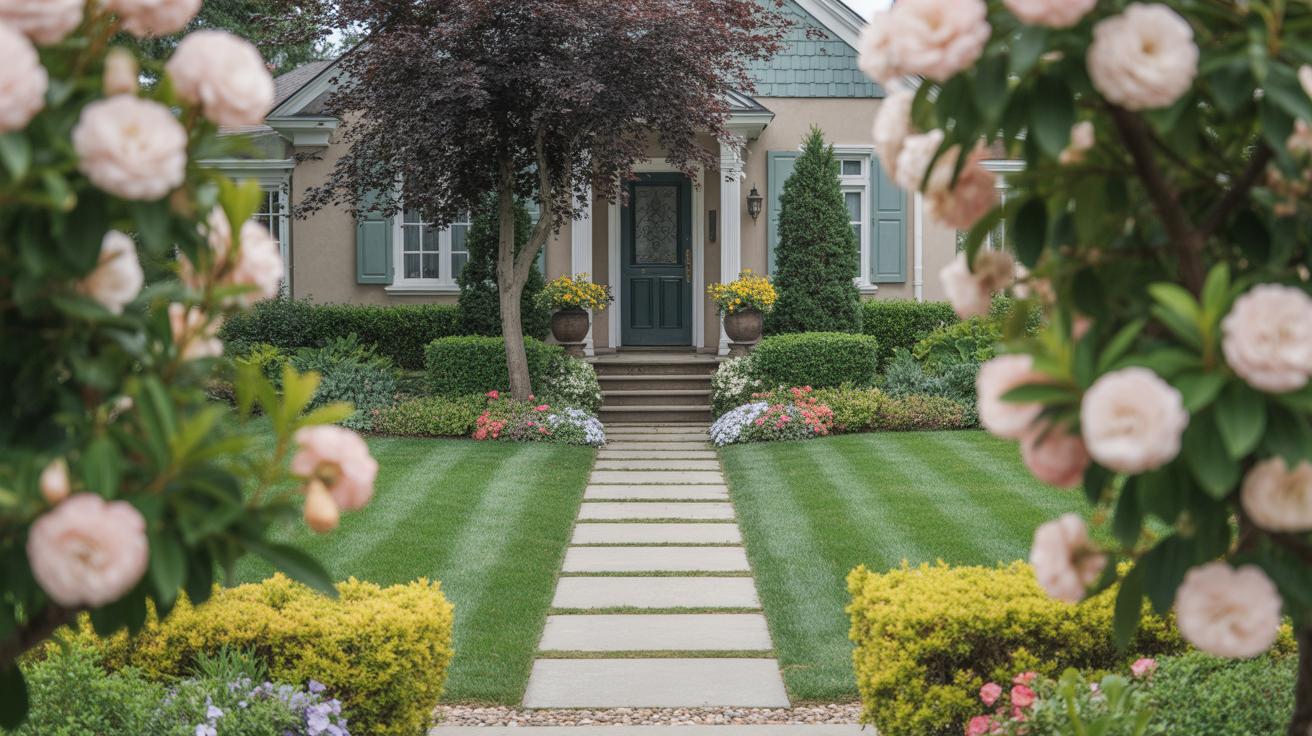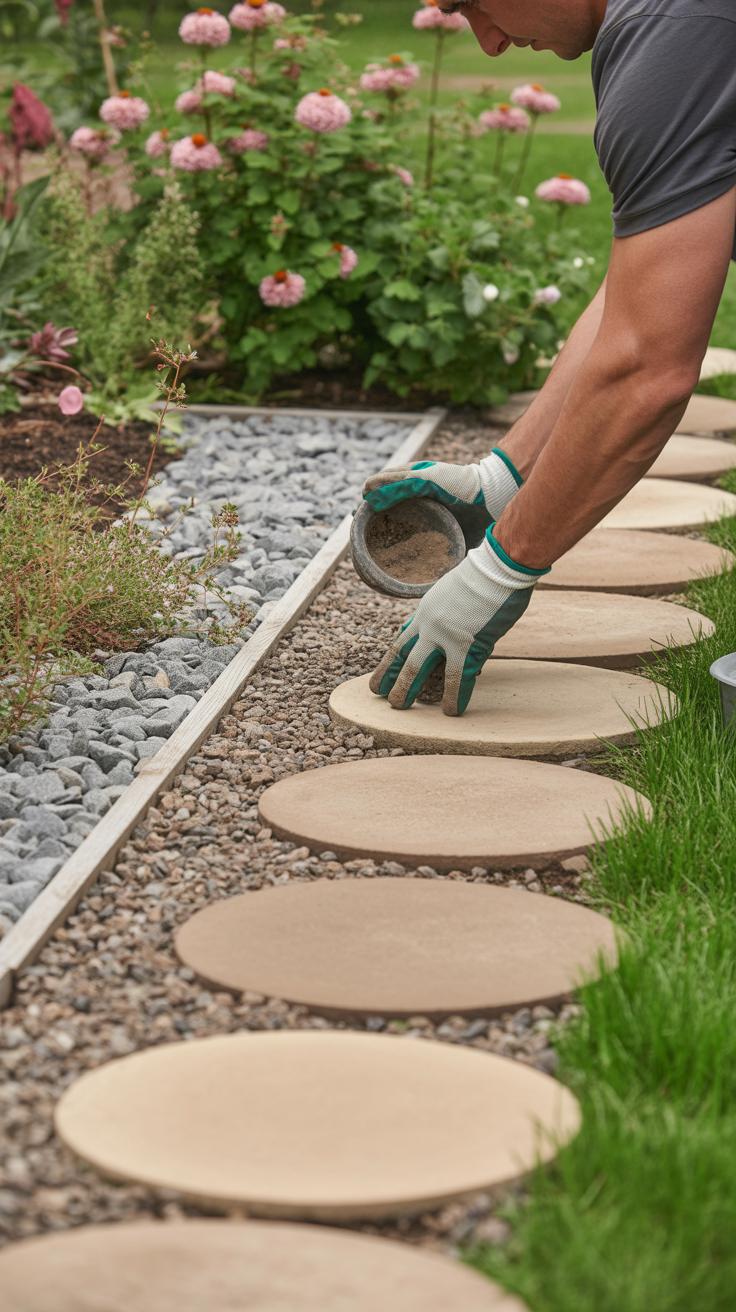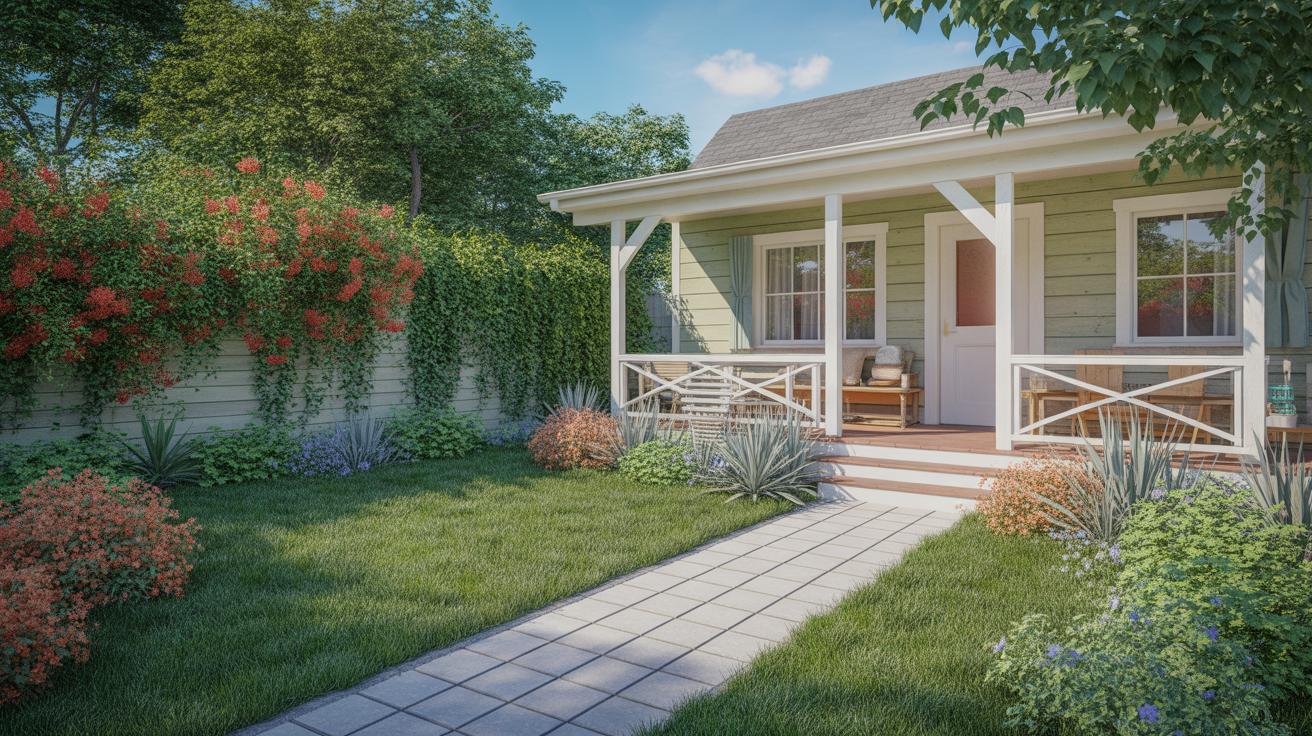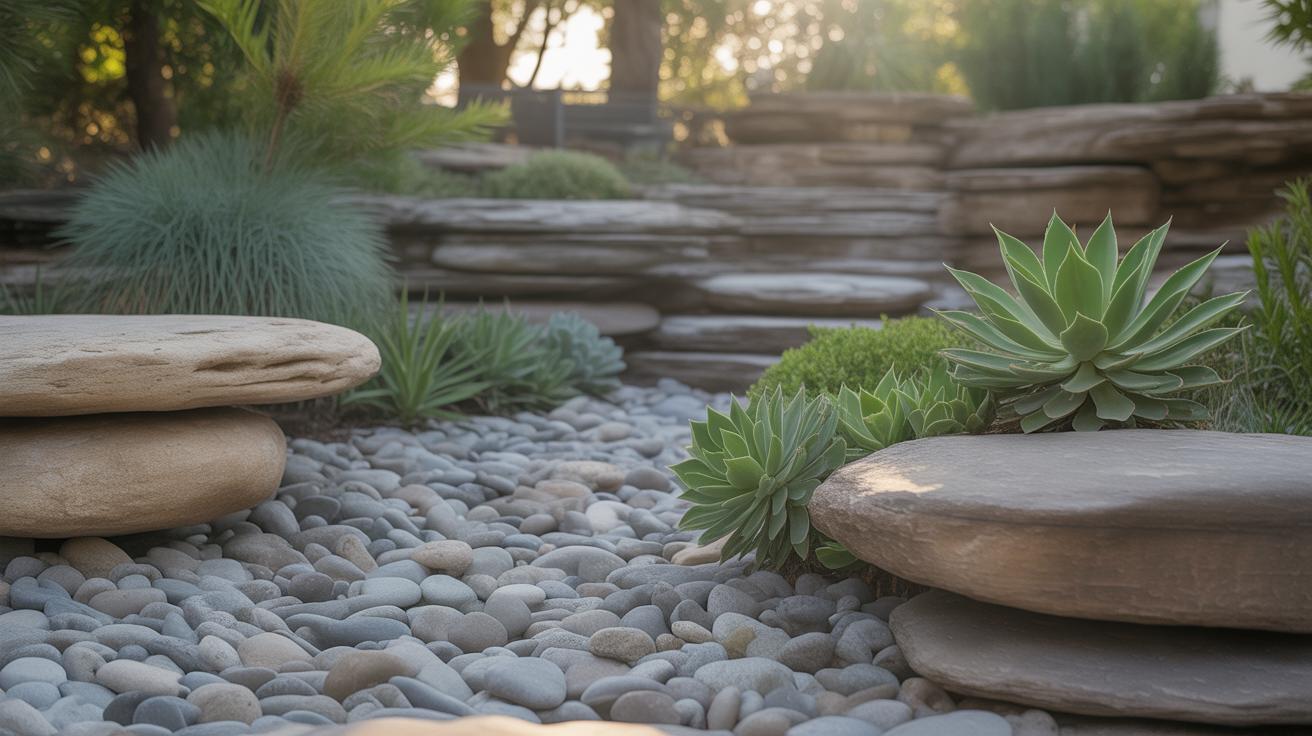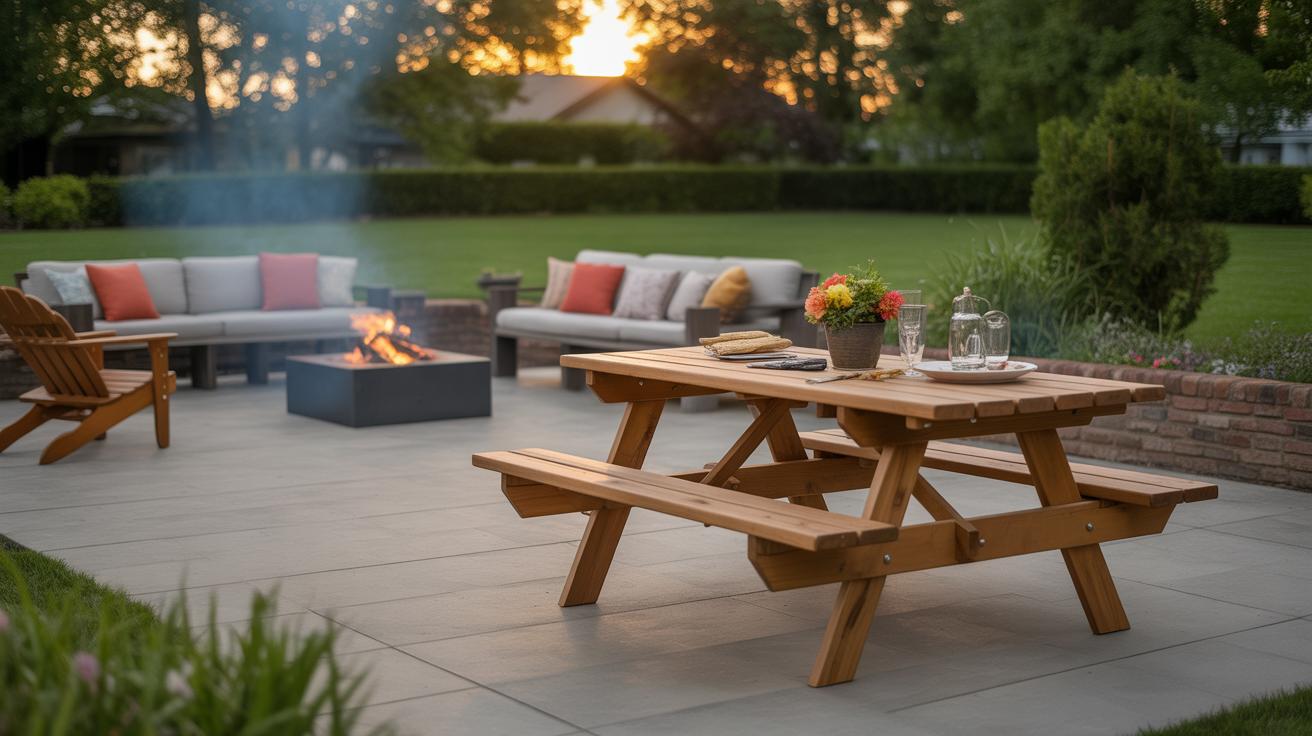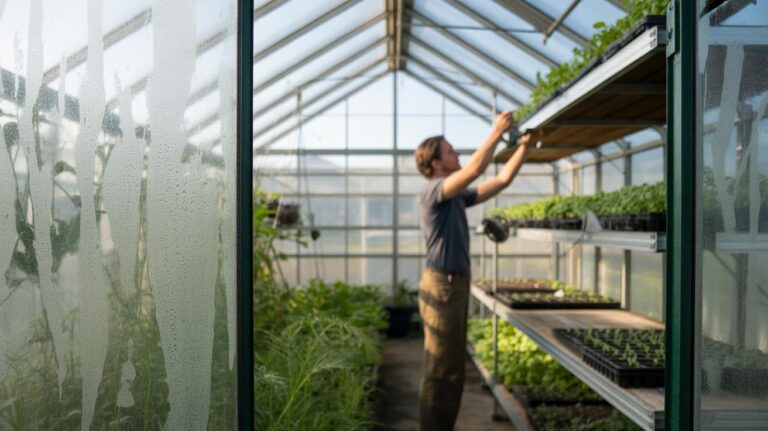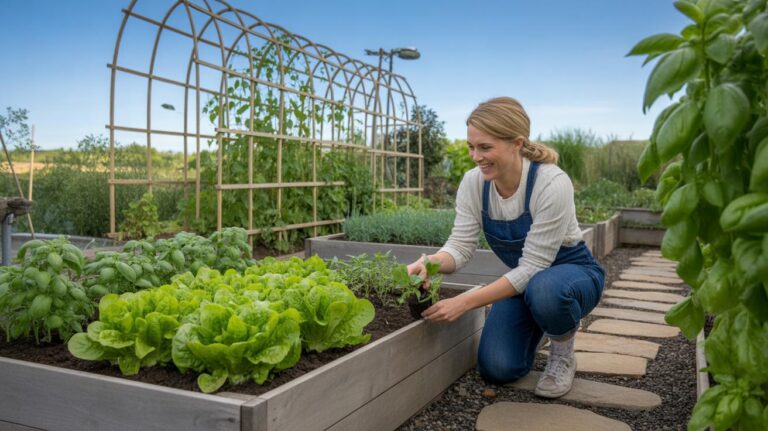Introduction
Modern backyard gardens combine comfort and aesthetics to create outdoor spaces that you can enjoy daily. A streamlined planting plan helps simplify what you grow while making your garden look neat and inviting. This article explains how to plan your backyard with simple, clear steps that anyone can follow.
You will learn how to choose the right plants for a modern look, add water features that enhance the space, and organize areas for relaxation and play. By the end, you’ll have ideas to make your backyard both beautiful and easy to care for.
Choosing Plants For A Modern Backyard
Picking plants for a modern backyard can feel a bit tricky, especially when you’re aiming for simplicity and a clean look without it feeling too bare. The key is to focus on plants that don’t demand constant attention but still offer a clear, attractive presence.
Select Low-Maintenance Plants
Low-maintenance plants are ideal because they cut down the time you spend watering, pruning, or fussing over every leaf. Think about succulents like agave or sedum, ornamental grasses such as blue fescue, or native perennials that handle well with seasonal changes and less water. These choices help avoid a garden that feels overworked or fussy. Plus, they’re usually tough enough to survive occasional neglect, which many of us experience at times.
One thing I noticed is that choosing drought-tolerant plants doesn’t mean your garden has to look dry or dull. It almost forces you to be more creative with form and spacing, rather than piling on flowers.
Use Different Plant Textures And Colors
Variety in texture and color is what stops a simple garden from becoming plain. You might mix the fine leaves of lavender with the broad, glossy leaves of hostas, or contrast the spiky shapes of yucca against the soft curves of ornamental grass. Colors don’t need to be loud; muted greens, silvers, and occasional deep blues or purples can make the garden feel calm yet interesting.
Try to resist the urge to fill every inch with flowers. Instead, let the differences in plant feel and look stand out. That way, your garden breathes.
Have you ever thought about how plants feel, not just how they look? Running your hand over a lamb’s ear leaf or brushing past tall reeds changes your experience of the space. That’s part of what makes a modern garden feel inviting without fuss.
Planning Your Garden Layout
Designing your backyard means thinking about how you’ll actually use the space—not just filling it with plants but creating clear zones that make sense.
Start by dividing the area into three main parts: one for planting, one for relaxing, and one for activities or play. This separation helps keep things tidy and purposeful. For example, you might cluster your garden beds along the fence or a sunny corner, leaving the middle open for seating or a small lawn.
Clear zones mean you don’t accidentally mix running kids with delicate flower beds or squash your favorite reading nook under tree branches. When areas have defined roles, it’s easier to care for each and enjoy them fully.
Open spaces are equally important. Too many crowded plants can block movement and make everything feel cramped. Open patches let air and light move freely, which often makes the whole backyard seem bigger and more inviting.
Personally, I noticed that giving my backyard just one simple open lawn transformed it from a cluttered jumble into a place where guests actually want to linger. Consider questions like: Do you want space for a game? Or just quiet spots? The answers guide your layout more than you’d think.
Incorporating Water Features
Install A Small Pond Or Fountain
Small ponds or fountains fit surprisingly well into most backyard gardens, even when space is tight. Think of a compact pond tucked into a quiet corner, edged with smooth stones or simple plants like reeds or water lilies. This kind of feature doesn’t just look appealing—it invites wildlife too. Birds come for a drink or a quick bath, while small fish can add an unexpected bit of life and color below the surface.
You don’t need a huge pond to bring nature closer. Sometimes a modest, well-placed fountain offers a similar vibe, especially if it has a simple design that complements your modern aesthetic. I found that even when my fountain wasn’t the centerpiece, its gentle splash made the garden feel alive without being overwhelming.
Use Water To Create Sound And Movement
Moving water adds something subtle but impactful to a backyard. The soft murmur or occasional trickle breaks up stillness in a way that feels both peaceful and energizing. It’s strange—water’s sound can calm your mind while also drawing your attention. Perfect for a modern garden that might otherwise feel too stark or quiet.
Places where water flows over rocks or falls softly into a basin create a small but noticeable movement. That motion attracts your eye, which can make your space feel more dynamic without cluttering things. Plus, there’s something about the rhythm of flowing water that almost invites you to pause for a moment and just listen.
Selecting Garden Furniture And Accessories
Choosing furniture for a modern backyard can feel straightforward, but it’s tricky to balance style and function without cluttering the space. I think minimalist pieces often work best—simple, clean lines that don’t scream for attention but still feel inviting. Imagine a sleek bench or a low-profile table in natural wood or metal. These choices not only look good but let your plants and garden features shine rather than compete.
When picking furniture, consider comfort too. An elegant metal chair might look great, but if it’s uncomfortable, you’ll avoid using it. Adding soft cushions in neutral tones can soften the look without overwhelming the minimalist vibe.
Accessories pull the garden together and add practical value. Lighting is huge here—soft LED string lights or small spotlights near pathways can create ambiance after sunset. Pots and planters don’t always have to be traditional clay or ceramic. Simple geometric shapes in muted colors work well and echo the modern aesthetic.
As for garden art, don’t go overboard. A few carefully chosen pieces, like a sculptural metal form or a subtle wind chime, can add personality without feeling cluttered. But maybe you want more? Sometimes, a bit of contrast adds character, and that’s okay too.
Using Sustainable Gardening Techniques
Using sustainable methods in your backyard garden isn’t just about being eco-friendly—it’s also practical. Native plants, for example, usually need less water and fewer chemicals because they’re already adapted to the local climate. I’ve noticed that when I switched to native species like coneflowers and black-eyed Susans, my garden required less fuss in summer. They cope with drought better, too. So, less watering, less work—but with plants that actually thrive.
Collecting rainwater is another approach you might consider. Setting up simple barrels under downspouts catches runoff from your roof, providing a free water source during dry spells. I admit, it took me a while to install one, but once done, it felt good knowing the garden was getting natural irrigation without tapping city water. It’s subtle, but over time, could cut water bills significantly.
Here are a few benefits of these techniques:
– Native plants reduce the need for fertilizers and pesticides.
– They support local wildlife better than exotic species.
– Rainwater harvesting lowers demand for treated water.
– You build resilience against heat and drought cycles.
Have you thought about which native plants fit your yard, or whether rainwater collection suits your setup? While it may not be a quick fix, small efforts here feel worth pursuing if you want a manageable garden that doesn’t drain resources.
Creating Pathways And Borders
Paths and borders do more than just mark the edges or provide a route through your garden—they shape how you experience the space. When designing paths, think about how you want to move through your backyard. Maybe a straight path feels too formal. A slight curve can invite a slower walk and reveal hidden corners. Paths organize the garden into sections, helping to define areas for seating, planting, or play. But they also add personality. A path isn’t just a way from A to B; it can become a subtle design feature.
Simple Pathway Materials
Gravel is surprisingly versatile and easy to install, making it a favorite for modern garden paths. It lets water pass through, which can help with drainage. Plus, the crunch underfoot adds a quiet, sensory detail. Stepping stones work well too. You don’t have to lay them side by side in perfect lines. Let them rest naturally on the grass or moss—this makes the path seem to float and keeps things casual. Both options are low maintenance and don’t demand a lot of fuss or materials.
Use Borders To Highlight Plants
Borders are like the frame around a painting. They keep garden beds neat, preventing grass or mulch from spilling over into paths. Simple edging plants—like dwarf mondo grass or lavender—can create subtle boundaries with soft texture and color. Stone or brick edges provide clear definition, giving your beds structure without feeling heavy. Sometimes, a low border invites you close to plants, making the whole area feel intentional. But if you overdo it, borders might seem too rigid, so finding the right balance is key.
Lighting Your Modern Backyard
Lighting in your backyard does more than just brighten the space—it sets the mood and keeps things safe after dark. Solar garden lights can be a smart choice here. They run on sunlight, so you don’t have to worry about wiring or electricity bills. Just stake them into the soil during the day, and they’ll glow automatically at night. It’s one of those simple solutions that feels almost too easy but really works.
Think about where you want to draw attention. Placing lights near plants can make leaves and flowers catch the eye in subtle, unexpected ways. Around water features, a soft glow can create a calming vibe—like the gentle reflection of moonlight. Don’t forget seating areas. Adding some light nearby means you can relax or entertain without bumping into things or fumbling for switches.
Maybe try mixing low-level lights with a couple brighter ones to avoid a flat look. Lighting shouldn’t shout; it should invite you to spend more time outside. What spots in your yard might feel safer or cozier with a little illumination? Sometimes a small change, like adding a solar path light or a lantern by a bench, can make the whole backyard feel different by night.
Maintaining Your Backyard Garden
Set A Regular Watering Schedule
Watering your plants regularly helps them grow steadily, but striking the right balance is tricky. Too much water can drown roots and invite pests, while too little leaves plants struggling for survival. I found that setting specific days or times to water—like early morning or late evening—makes a difference.
Try to keep it consistent, not random. When you water on a schedule, plants develop stronger root systems because they learn when to expect moisture. You might think you’re saving time by skipping days, but that can stress the plants more than helping them. On the other hand, wasting water by daily sprinkling isn’t necessary either.
Do you notice your soil drying out faster than you expected? That’s a clue to adjust. And when there’s rain, feel free to pause the schedule—it’s not sacred. The key is paying attention to your garden’s needs over rigid rules.
Prune And Remove Dead Plants
Cutting back overgrown branches or dead leaves does more than tidy the space. It encourages fresh growth and keeps plants from using energy to maintain damaged parts. I often hesitate to prune at first—there’s a worry about doing it wrong—but a good trim early on prevents bigger messes later.
Removing dead plants or those past their prime also stops diseases from spreading to healthy ones. It’s like clearing clutter so the good stuff breathes better. A garden that’s too crowded or full of dying plants feels neglected, which might surprise you since neglect can sneak in even when you think you’re doing enough.
Keep an eye out for weak or sickly spots regularly. Pruning doesn’t have to be drastic; even small snips can make a big impact. Do you prune more in one season than another? Most find late winter or early spring pruning works well, but some plants prefer after flowering. It’s worth learning about your specific choices, but don’t get overwhelmed—the act of pruning itself already helps more than you might expect.
Adapting Your Garden For All Seasons
Keeping your backyard interesting all year takes a little planning but pays off in ways you might not expect. One way is to pick plants that bloom at different times, so there’s always something catching your eye. For example, daffodils or crocuses in early spring, lavender and daisies in summer, and chrysanthemums or witch hazel in fall. This kind of layering gives your garden a rhythm—sometimes subtle, sometimes bold. You might even find yourself looking forward to a certain flower’s return, which is a bit nice.
Besides plants, think about the furniture and features you put outside. Choosing items that can weather rain, snow, or blazing sun means you don’t have to swap everything around every season. Metal chairs with waterproof cushions, wooden benches sealed properly, or fire pits that work in chilly months keep the space usable no matter the weather. I’ve noticed how a sturdy umbrella or a cozy throw can make a chilly afternoon linger a bit longer outside. It’s these thoughtful touches that make a backyard feel, well, alive through the year.
So, ask yourself: what do you want from your garden in winter or late fall? Sometimes, less flashy but reliable choices can bring unexpected comfort or interest—not just bright colors but textures, shapes, and those soft natural sounds when the wind picks up. Your backyard can be more than just a summer hangout, perhaps more of a place to discover slowly with each season.
Conclusions
Building a modern backyard means planning with purpose. Streamlined planting plans reduce clutter and make your space easy to maintain. Selecting suitable plants and combining them with water features can transform your garden into a peaceful retreat. It also opens up areas for social and personal activities.
With the right approach, your backyard becomes a place you look forward to spending time in. Taking small, smart steps in planning and planting ensures that your modern backyard grows with you and remains enjoyable through the seasons.



